What is golf terms? What golf terms should I know? Golf terms are descriptions of items used in golf. There are lots of golf terms to understand but, what is golf terms, is probably not the correct pronunciation although I’ve heard it many times. What are golf terms is a better description since there are so many different terms. Anyways, these are most golf terms that anyone who is the least bit interested in golf should know.
Golf Swing terms
- Grip – how to hold the golf club. Lots of different ways, see them and what is best for you here.
- Stance – how wide to have your feet and how much flex you should have in your knees, Also refers to your balance and how much you lean forward
- Alignment – the direction you are hitting. In golf, making sure your feet, body and club face are in the correct alignment are very important for you accuracy success
- Backswing – in your stance, when you take the club back behind you. A lot of golfers don’t realized that your back swing can affect your
- Downswing –after your back swing, bringing you club back down to the ball.
- Follow through – after your club hits the ball, usually towards the target and over your sholder
- Tempo – The speed in which you take the club back in your back swing and down in your downswing. Tempo can be very important, too fast or too slow can affect accuracy and distance. One of the best tempos I think is golfer Max Homa.
- Swing speed – The speed the club is moving as it hits the ball. Pro’s obviously have a higher swing speed. The higher the swing speed the farther the ball goes.
Golf ball flight terms
- Draw – If you are a right-handed golfer the ball turns slightly to the left in air. A left-handed golfer to the right. Draws are a good thing. Lots of PGA pros use a draw as their promenant shot. Not to be confused with a
- Hook – Draws are good, hooks are bad. Hooks are big sweeping ball turns that end of no where near the area the golfer was aiming. Like a draw left for right-handed golfers and right for lefties.
- Fade – opposite of a draw. Slight curve to the right for a right-handed golfer, left for a lefter. Can also be called a power fade because it can give the golfer more distance than say a straight or draw. It all depends on the golfer.
- Slice – Right handed golfer hits the ball and causes the ball to bend or banana to the right, left for a left-handed golfer. The bad version of a fade.
- Push – To the right for a right-handed golfer, left for a lefty. This is caused by leaving the club face open when it makes contact with the ball. A slice will curve whereas a push just goes straight to the right and left.
- Shank – is a complete miss hit ball. It typically happens when hitting the ball off the hosel of the club not the club face. It can also happen if the ball is hit with the toe of the club.
- Hosel Rocket – as mentioned in shank, ball is hit off the club hosel not the club face. This shot can “rocket” in any different directions.
- Double cross – when a golfer intends to hit a shot one way, like a fade but crosses things up and hits a draw or even a hook.
Golf equipment or gear terms
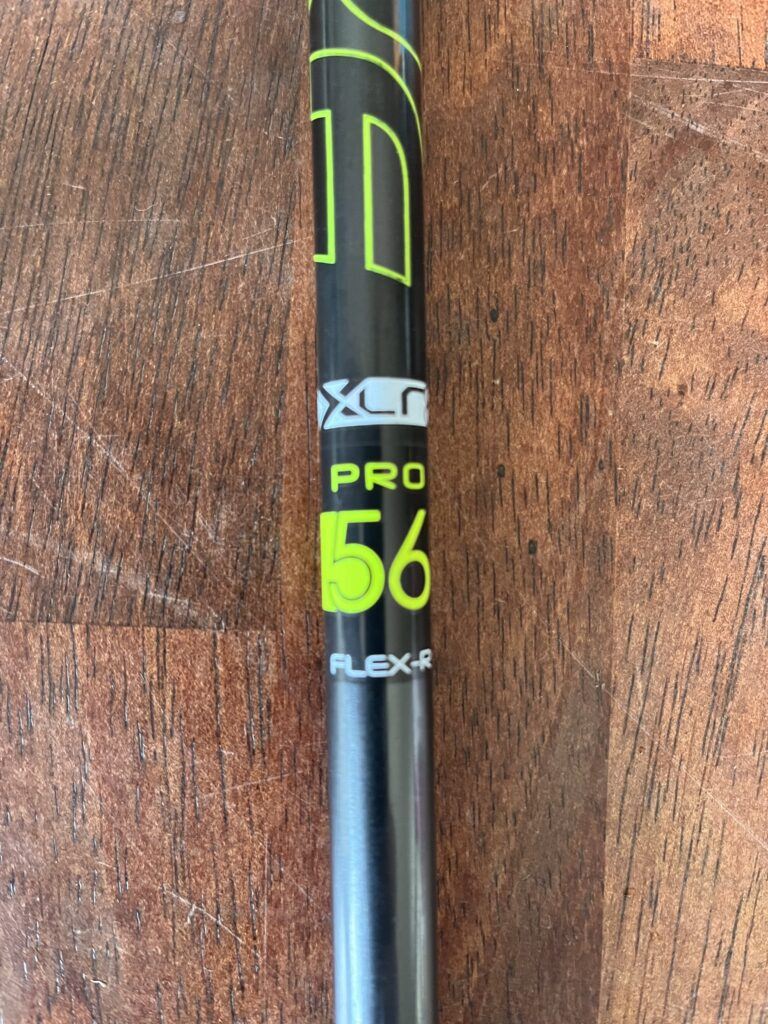
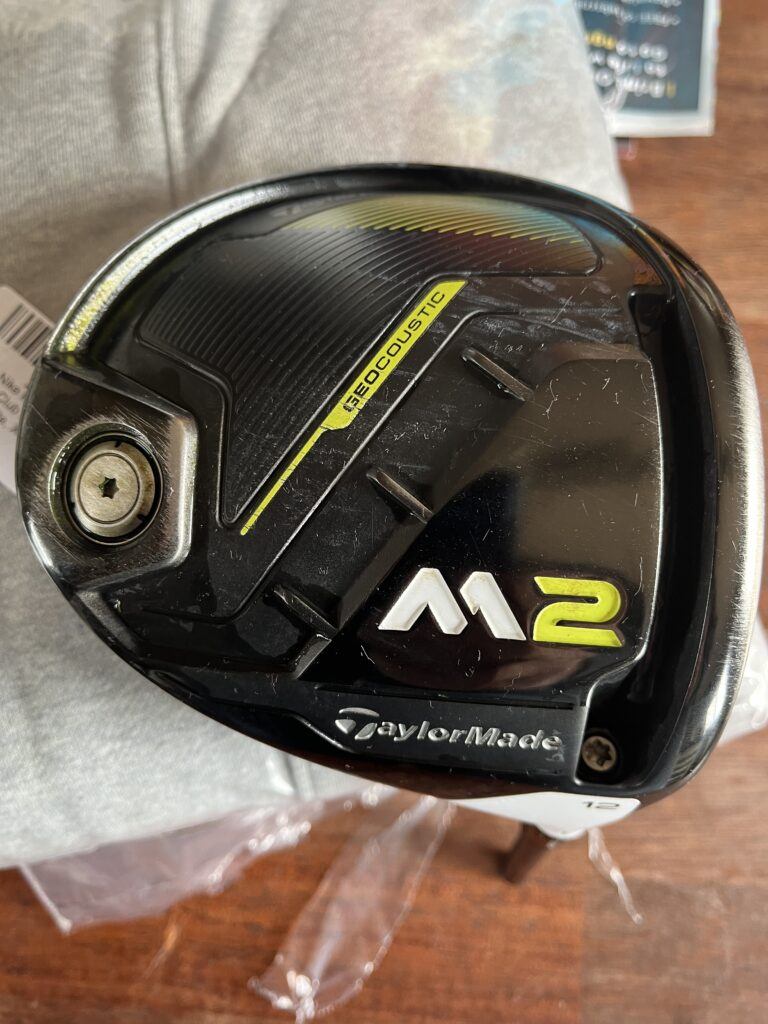
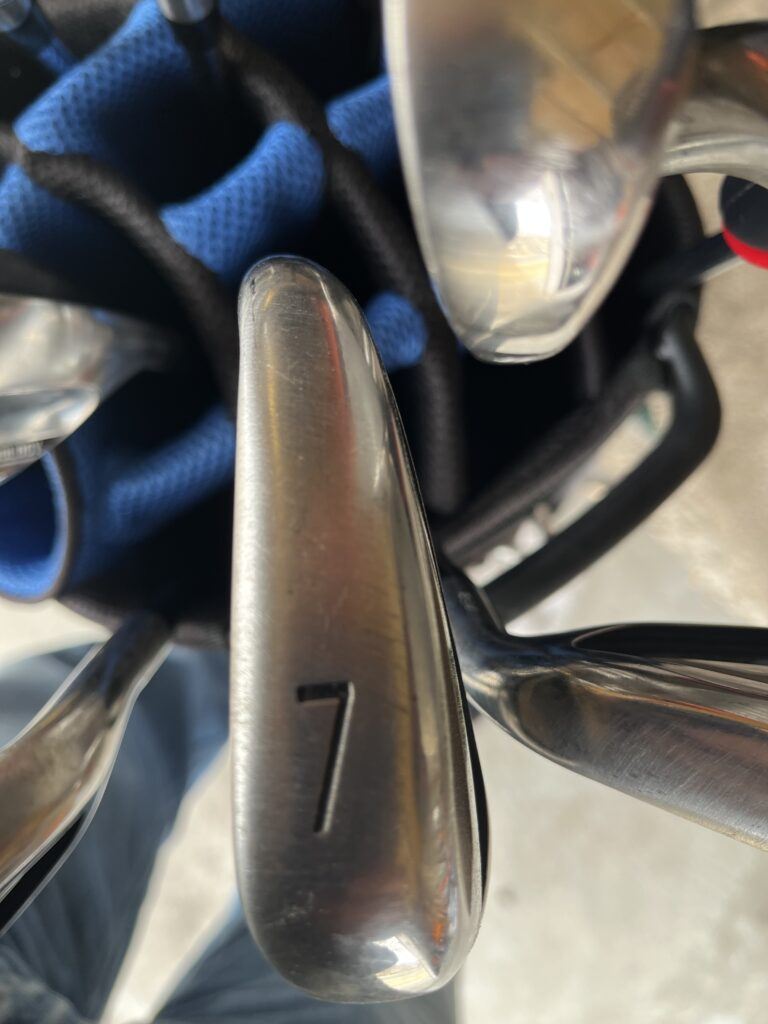
There are lots of different brand of golf clubs and accessories to choose from. Some of the top names are Titleist, Taylormade, Callaway, Cobra, PXG and a whole list of other. The equipment items below are typical of the golf equipment available today.
- Golf clubs – what a golfer hits the ball with.
- Driver – The big stick, the big dog. This is the club typically hit first on a par 4 or 5. The club that hits the ball the furthest. Pretty much always hit off a golf tee.
- Woods – or fairway woods. Called woods from the good old days when the clubs were actually made out of wood. Now they are made from all kinds of material. Sometimes used to describe the driver. Mostly covers the 2-5 woods. Used to hit longer distances but shorter than a driver.
- Hybrids – A rather new club. Similar to woods, hitting from a longer distance but are usually a little more forgiving when the ball is not hit perfect. Can be 4-7 club. Easier to hit from off the fairway. Popular with older golfers or people with slower swing speeds.
- Irons – Most likely a golf bag has more irons than any other club. Once again, an old term that has been around for a long time, clubs these days aren’t made from iron. The higher the iron number the further the ball should go. The lower the number on the club, the higher the ball should go. Irons can range anywhere from a 1 iron all the way down to wedges. Wedges are considered irons and vis-a-vera.
- Wedges – as mentioned, can be called irons. Typically, used around the green or for short shots, usually measured as degrees, typically a high ball flight
- Pitching wedge – 43-47 degrees
- Gap wedge – 47-52 degrees
- Sand wedge – 54-56 degrees
- Lob wedge – 58-62 degrees
- Putter – used to hit the ball on the green. Not used to hit the ball up in the air. Putters come in different styles,
- blade style
- mallet style
- traditional.
- Shaft – Comes up from the club face and has a grip on it to hit the ball. When a golfer swings the club the shaft flexes on the downswing, depending on the speed of the swing determines the type of shaft. The faster the swing the stiffer the shaft
- X-tra Sitff
- Stiff
- Regular
- Senior
- Ladies
- Steel
- Graphite
- Golf grip – The grip is at the top of the club for the golfer to hold onto. There are different sizes of grips to choose from depending on your hand size ahd personal feel.
- Golf balls – Lots of different options here made available by all the major golf manufactures.
- Tour performance
- Tour value
- Straight Distance
- Soft distance
- Golf bags
- Tour bags
- Cart bags
- Carry bags
- Golf Accessories
- Golf Shoes
- Tees
- Glove
- Ball marker
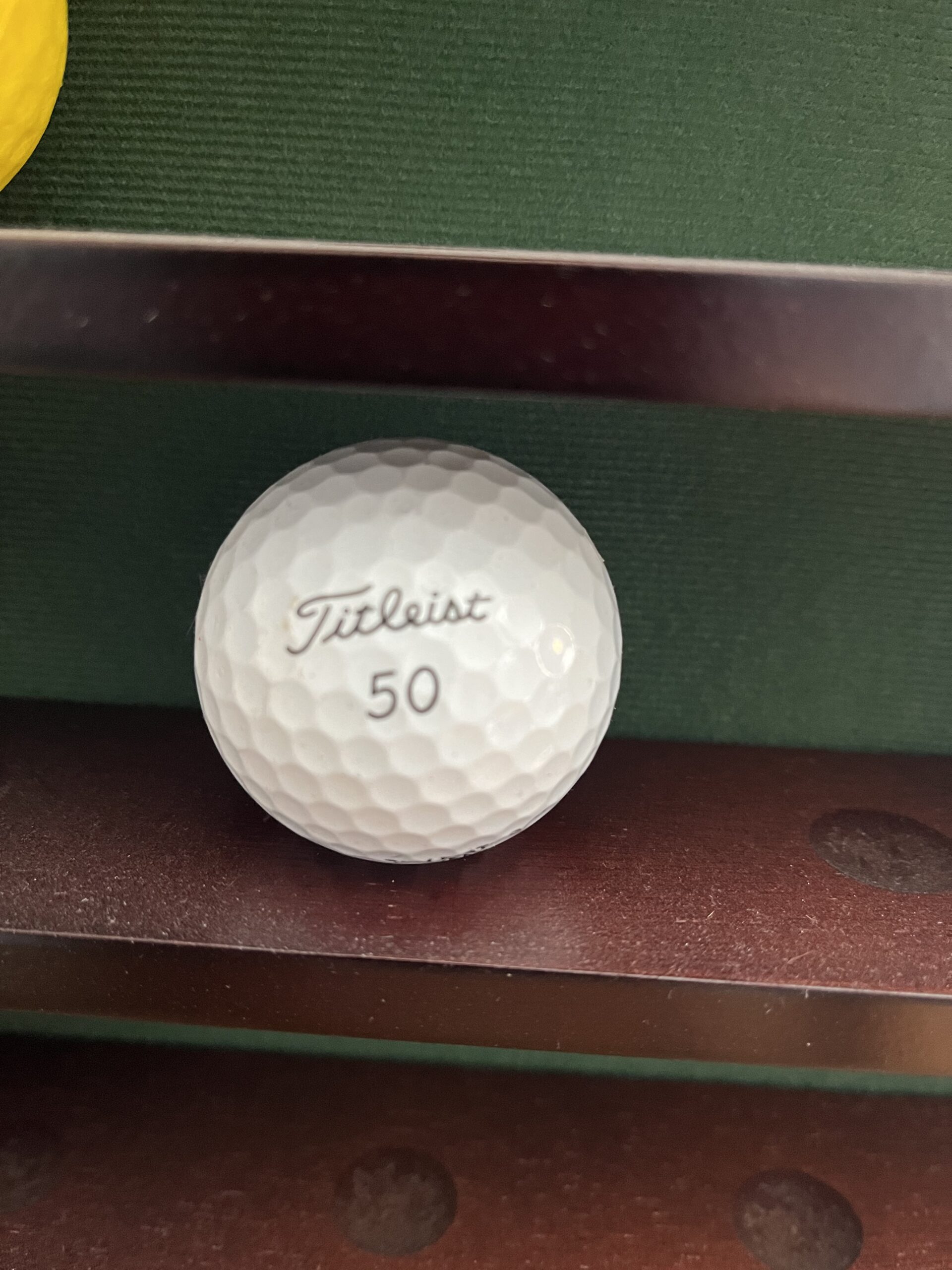
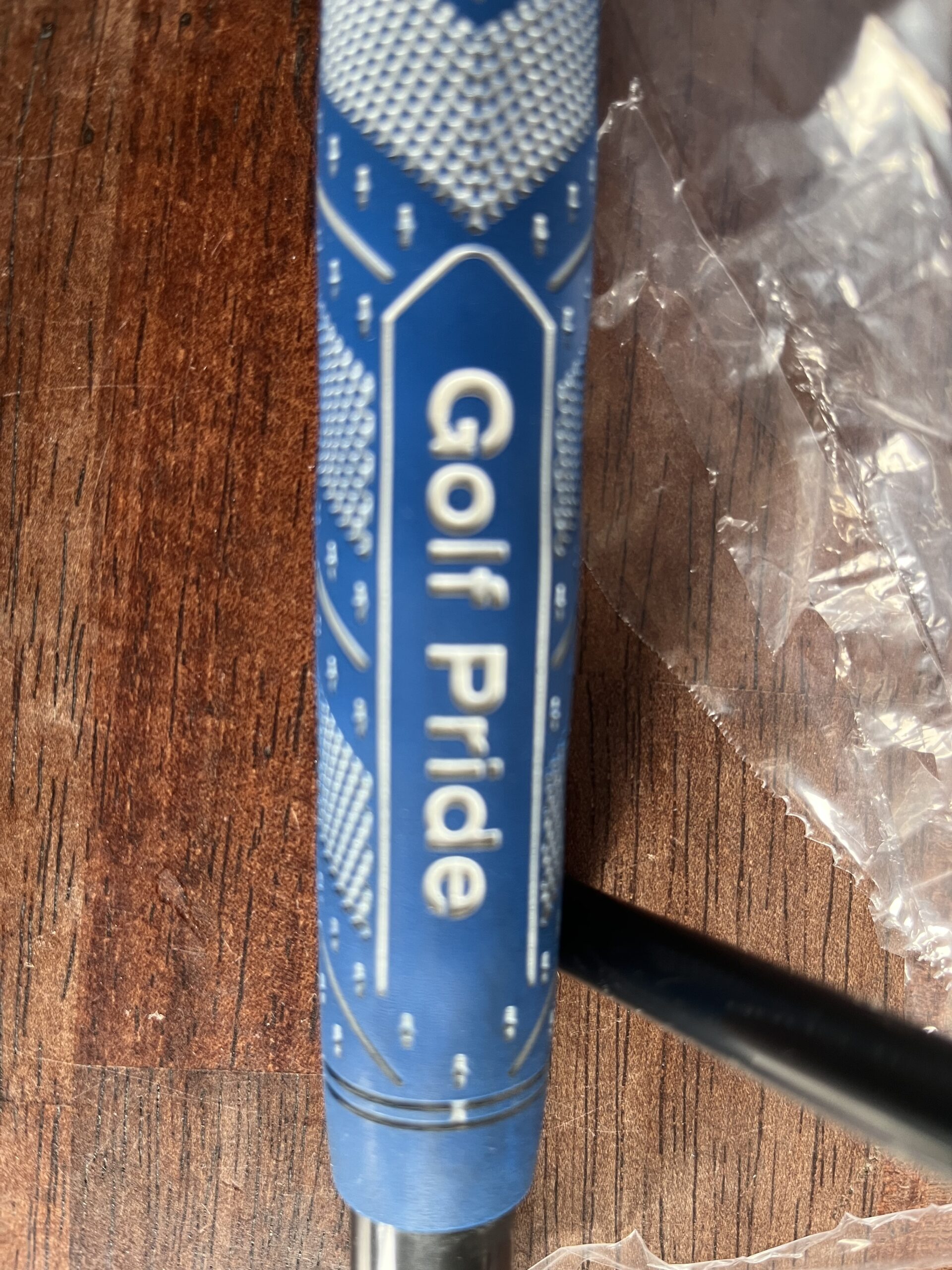
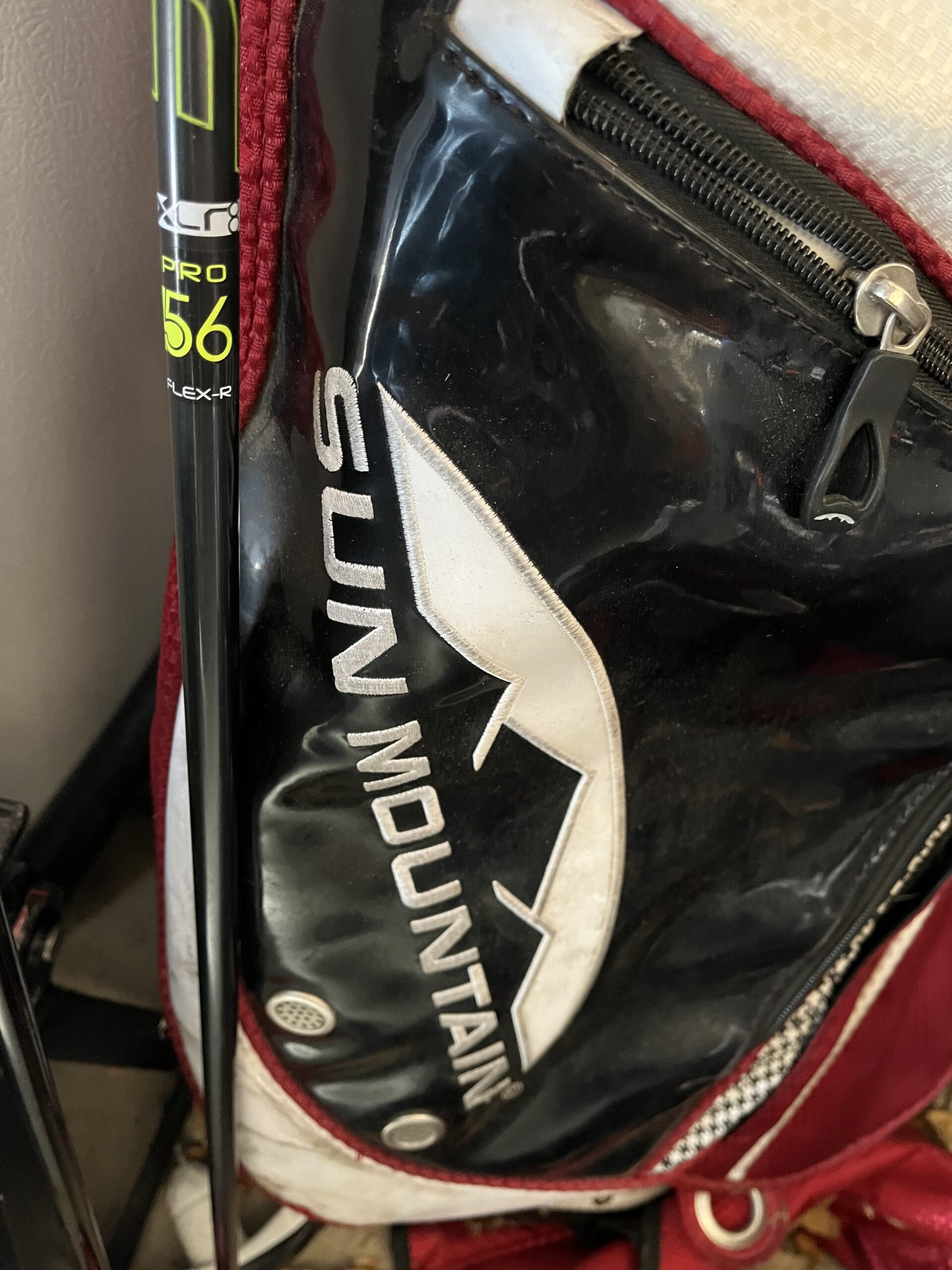
Golf course terms
- Public – Open to anyone to play. Typically, most courses in the USA are public. Tee time are typically 10 minutes apart. They can be super busy on weekends and sometimes take a long time to play.
- Private – Have to be a member or know a member to play. Players join a private course at a cost and they are usually exclusive depending on the course or the members. Tee times are a little more spread out and the courses are normally in better shape than an average public course.
- Semi-Private – A combo of public and private.
- Tee box – Starting position at each hole. There are typically 3 or 4, sometimes 5 tee boxes to choose from. The longest ones the furthest back are usually refered to as the tips. The pros and long hitters use these. They usually come in different colors and mean different things to different golfers. A lot of times the tips are black, next closest are the blues, then the whites and the closest ones to the pins are the reds. How good of a golfer should determine which to use. Too many golfers let their ego in the way and play back at the tips or blue tee boxes when they should probably play the whites.
- Tee times – The time golfers start their round of golf. Depending on the type of course times are typically 10-30 minutes apart. One shouldn’t show up right before their tee time. They should get to the course early to hit and putt a few balls to be ready to play.
- Fairway – the short grass and the best spots to hit balls on the golf course.
- Rough – usually on the sides of the fairway. The grass can be just a little
- Green – or the putting green. This is where the pin is located. The grass is usually cut very short so that the ball can roll relatively smoothly across it.
- Pin – goes in the hole located on the green. It is also called the flag stick, what most golfers aim for when aiming for the green.
- Hazards – There are several hazers on the golf course, trees, water out of bound markers. Hazards are things you normally want to stay away from. They can cause your score to go up
- Sand trap – area typically near the green but can also be located along the fairway. The pros usually don’t have any problems with sand traps but amateurs do.
- Driving range – Practice area to help you improve your game. A lot of golfers to the driving range before the play their golf round to loosen up or just practice a little beforehand.
- Putting green – area for to practice putting. Usually has multiple holes so that lots of people can practice putting at the same time.
Conclusion
I hope this page helps those of you that are not as familiar with golf understand some main golfing terms and you no longer need to ask what is golf terms should I know. These are the most common and should help you enjoy golf by learning a little more about it.
Comment or question about this post? Leave a message below.